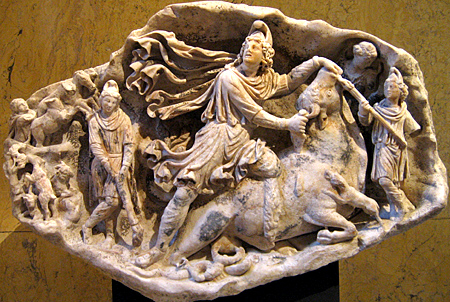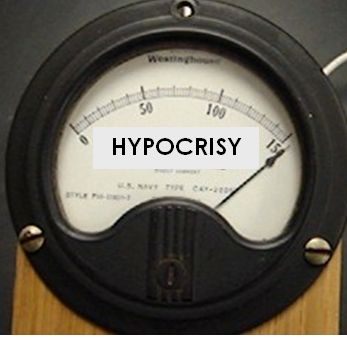I chose to work with the Norse and the Hellenic
because I have very little knowledge of the Norse compared to the knowledge I
have of Hellenic culture and beliefs. I feel the point of this section is to
learn and expand our knowledge while being able to compare and apply it with
what we already know.
Earth
Mother
The Earth Mother
is a figure that can be seen in nearly all Indo-European cultures. However most
of these images are of a raw primitive earth goddess. Very seldom are they seen
as very cultivated refined deities.
In the Norse
culture, specifically in the Scandinavian tradition, “…Jord is the
personification of the primitive, unpopulated, and uncultivated Earth.” (Lindemans
Jord) .
She is said to be one of the many wives of Odin and the mother of Thor.
The Hellenic
mythologies have a much more defined mythos surrounding Gaia. She gives birth
to the Titians and all manner of creatures of the Heavens, the earth, and the
underworlds; both sea and under the ground alike. Gaia though is viewed as a
rival of the gods. It is also from her body which humankind was formed.
Deities of Land
From what I have gathered from Norse mythology
there was not a great deal of separation when it came to Land, Sea, and Sky. It
is almost as if all of Midgard was seen as one whole world with no major
divisions. However, there is the possibility of a case being argued that Freya
was the goddess of land. She is the “… patron goddess of crops and birth…
spring and flowers.” (Lindemans Freya)
In the Hellenic
culture, land deities were called Chthonic deities, also known as “Theoi
Khthonioi”. “The word comes from the Greek chtonios,
which means ‘of, in or under the earth’” (Lindemans
Chthonic gods)
They were the gods which lived on the earth, tending to the needs of all things
upon and within the earth. A few examples would be Demeter, Pan, Persephone,
Hades, etc.
Deities of Sea
From what I have
learned from this course it is very had to find a real hard line drawn within
Norse culture for specific deities of the Sea, or any realm over all. Though
there are some deities as well as giants that are seen to have their domains in
the sea. Aegir is one of the deities which had the defined role of being the
god of the sea. His wife was the sea
goddess Ran, with whom he ruled the seas. They were the patron of sailors. (Lindemans
Aegir)
For Hellenic culture
there was a large variety of deities which ruled over the seas. The ancient
Greek term for these gods was “Theio Halioi.” There were the primordial deities
such as Oceanus and Tethys, the main ruler of the seas Poseidon, and then less
powerful deities such as the Old Men of the Sea (Nereus, Proteus, Glaucus, and
Phorkys) and the Nymphs. There are many cases the Nymphs were seen as both
deities and nature spirits.
Deities of Sky
A case can be made
that the Norse had Thor and Odin as their sky deities. Thor would be seen as
the thunder god, the god of stormy skies. Odin can be seen as the god of the
sky since he is the ruler of the Aesir.
There are just as
many variations with the sky deities as there are in the Sea and Land for the
Hellenics. They were seen as the gods of sky and weather, they were the “Theoi
Ouranioi”. There were the gods of the wind, dawn, Atlas the sky bearer, Helius
the sun, the Hesperides (sunsets), Iris, Nyx, Selene, and Zeus just to name a
few. Each took a role in all the components which make up the Sky.
Outsiders
Nearly all the
Indo-European cultures had beings, either god or spirit, which they considered
to be against the order of the universe. By the definition we use in ADF for
Outsiders it usually is not too hard to see who would fall into this category
pretty easily.
The Norse had the
Jotuns. The Jotuns are the “primeval frost-giants, the enemies of the gods” (Lindemans
Jotuns)
which have dominion over Jotunheim. It
can also be said that Hel could be included in the list of Outsiders for the
Norse, as she will lead an army against the gods in Ragnarok.
The list of
“Outsiders” for the Hellenics could be rather lengthy. Many of the Titians
which were thrown into Tartarus would be seen as Outsiders. Nyx and her
children can be seen as being a part of the Outsiders as well since many of
them are disruptive to the order of the cosmos.
Nature Spirits
It is from the
Norse view of the Nature Spirits that modern fantasy owes many of its most
beloved races. In Old Norse mythology they
were called Vættir, or wights. The Vættir
were made up of elves, dwarfs, and gnomes.
There also seemed to be what Karl Mortensen terms as nature demons who
were made up of river-spirits, mermen, and mermaids. (Mortensen 47)
Within the
Hellenic culture there were spirits called Daemones. This was the general name
for the Nature Spirits. The following is a listing of some of the Daemones in
Greek Mythology: (Atsma)
·
Daemones Argyrean – men of silver age
immortalized as underground spirits responsible for earth’s fertility
·
Daemones Chrysean – men of golden age
immortalized as earth-dwelling spirits to watch over mankind
·
Daemones Chthonian - spirits of the underworld
·
Daemones Georgici - the spirits of agriculture
and faming
·
Daemones Halian – the spirits of the sea
·
Daemones Nomian – the spirits of the
countryside, pastureland and wilds
·
Daemones Uranian – the spirits of the sky
So to say that the Hellenics had a place for the Nature Spirits is
putting it lightly!
Ancestors
Ancestor worship
in Norse culture was as diverse as that of Nature Spirits in Hellenic culture. Though there doesn’t seem to a fully developed
structure of worship for the Ancestors but it can be clearly deduced that it
was part of the culture. There is evidence that the dead were conjured to gain
knowledge of things hidden, magic, and the future (Mortensen 41) . There is also
evidence of what is called erfiӧl, funeral feasts, which were
offerings to those who had passed into the afterlife (Mortensen 42-43) . It was a commonly
held belief that the soul of the dead stayed near for as long as the body
remained unburied. As for the forefathers of the people, they were seen as the
protectors of the family and therefore offerings were made to them. This could
very well be the starting point in the belief that the soul transmigrated into
different forms of being; each serving a purpose to the living. Once such form
was that of the endrbornir, which was when the soul of an ancestor living in
the body of a new born child. There was also the fylgjur, which was the
attendant of mankind from birth to the grave. The fylgjur was not only the
attendant of the individual but also of the family and it would pass from one
generation to the next. An argument can be made that even some of the Ancestor
were seen to have been raised to the level of gods; Snorri gives Frey as an
example of this saying he was an earthy prince that was raised to the status of
a god after his death (Mortensen 42) .
Ancestral working
in Hellenic culture was part of the lives of the people but in many ways it
seems undefined as a structured practice outside of the rituals for the newly
dead or part of the state religious ceremonies. Several sources write about the
Greeks giving offerings to the dead, “… people brought libations and food
offerings to the dead in their tombs…” (Nilsson 8) , offerings of mixed
fruits called pankarpia “… were also brought to the dead at the ancient Greek
equivalent of All Soul’s Day, the Chytroi, on the third day of Anthesteria” (Nilsson 9) . Nilsson goes on to
explain the Chytroi occurred “… the third day, or, more correctly, the evening
before…” He also goes on to explain that “Offerings of vegetables were brought
to the dead, and libations of water were poured out to them” (Nilsson 34) . Many of these
offerings many have been given to the dead not just as a sign of honoring but
because there were tomb cults at the time that believe the dead had the power
to do harm to the living. To support his view in this Nilsson says “… leaden
tablets with imprecations were deposited in tombs, a sure sign of the belief in
the power of the dead to do harm” (Nilsson 115) .
Works Cited
Atsma, Aaron. "Encyc_D." 2000. Theoi
Project . 1 6 2013. <http://www.theoi.com/Encyc_D.html>.
Lindemans, Micha F. "Norse Mythology."
March 1997. Encyclopedia Mythica. 16 April 2013.
<http://www.pantheon.org/areas/mythology/europe/norse/articles.html>.
Mortensen, Karl. A Handbook of Norse Mythology.
Neeland Media LLC, 1913.
Nilsson, Martin P. Greek Folk Religion. New
York: Columbia University Press, 1940. paper back.







-bandwidth-thief.jpg)








